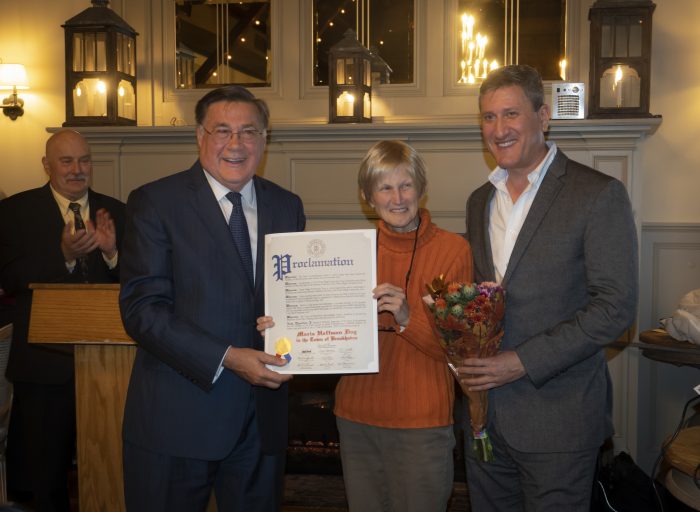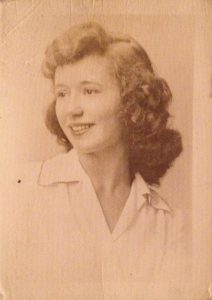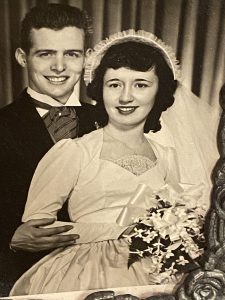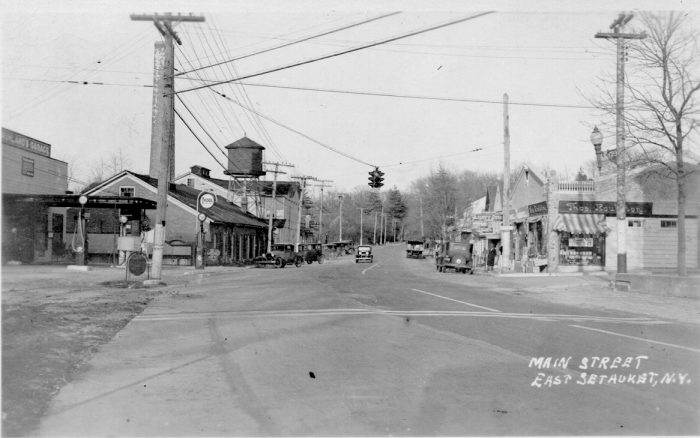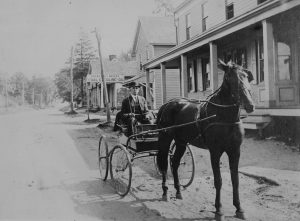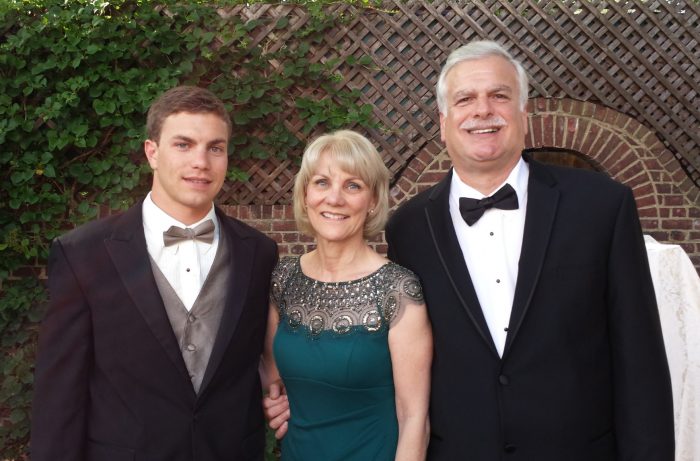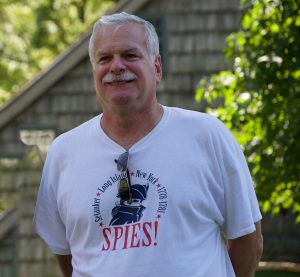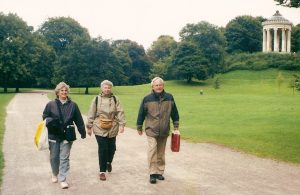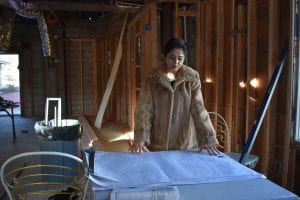The Three Village community is mourning the passing of Maria Hoffman, who was chief of staff to New York State Assemblyman Steve Englebright for nearly three decades.

According to her husband, George Hoffman, the Setauket resident died April 29 of metastatic breast cancer, which she bravely battled on and off since being first diagnosed in 2010.
Maria and George married in 2009 in Frank Melville Memorial Park. It was the second marriage for both. “When Maria and I married, I moved to Setauket from the South Shore,” he said. “She was Assemblyman Englebright’s chief of staff and had an extensive network of friends and colleagues. She loved the Three Village community and was involved with every aspect of it. I always tell people that she gave me an express ticket to the front of the line with all of the leaders of the Three Village community.”
In a November 2019 Village Times Herald article, Maria shared advice for a successful relationship: “We also make time for things that are important, whether it’s walking or in the summertime boating — being on a sailboat. We make time to balance all the busyness.”
Born on Oct. 14, 1958, Maria was a 40-year resident of the Three Village community. A graduate of the College of the Atlantic in Bar Harbor, Maine, where she received a Human Ecology degree, Maria was familiar with busyness. In addition to being Englebright’s chief of staff, she was also an avid photographer of landscapes and wildlife, a writer, beekeeper, birder, sailor, naturalist, a co-founder of the Setauket Harbor Task Force and a lover of wolves, whales, elephants and bees.
She was an illustrator of field guides on seashores, wetlands and woodlands. In a collaborative effort with Stony Brook University’s Museum of Long Island Natural Sciences, her illustrations can be seen in “A Field Guide to Long Island’s Woodlands,” “A Field Guide to Long Island’s Freshwater Wetlands” and “A Field Guide to Long Island’s Seashore.”
Maria was also a wonderful, helpful friend and frequent contributor to The Village Times Herald. Whenever a reporter was unavailable to cover a local event that she attended, she would always be willing to send in her own photos. Her nature photography also appeared in the Arts & Lifestyle section of TBR News Media papers.
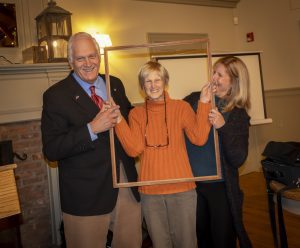
Colleagues and friends honor Maria
Englebright and Maria’s working relationship goes back to when he was director of the Museum of Long Island Natural Sciences in the 1960s. He secured a state grant to develop a water resources curriculum for Long Island schools, he said, and Maria interviewed for a position to help develop the curriculum. Englebright said she was a standout due to her photography, illustrating and writing skills. Once the project was completed Maria continued to work with the museum and Englebright. For the museum, she illustrated public education pamphlets, booklets and newsletters and also would write.
“I had the great, good fortune of being able to hire her, and I was able to retain her,” he said. “She was extraordinarily productive in public service in the preelected office capacity, too.”
Maria continued to work with Englebright when he became county legislator and then assemblyman, and he said even though she wasn’t originally from the Three Village area she made a point to learn about the community when he was running for legislator.
“She began to realize what a wonderful part of Long Island we live in, and she really enjoyed learning about the legislative reach of the office, and it opened a new vista of capability of serving,” he said.
Englebright added that Maria’s skills were based “on how she cared for everyone she met.” He said he will miss how genuine she was, and that many related to her which enhanced everything his office was involved in.
“It’s not possible to replace her,” he said. “Certainly, we can continue to do the work that she invested so much of her life into, as long as we remember and honor the work that she has done.”
Laurie Vetere, chair of the Setauket Harbor Task Force, described Maria as “an integral and founding member” of the task force, along with George.
“She loved taking pictures of the harbor and its marine life and waterfowl which were compiled into our annual calendar that we gave as a thank-you to our donors,” she said. “Her photography was stunning. She also loved going out on the water at daybreak to do the water testing that we do for Save the Sound, and she would spend hours the night before calibrating the scientific equipment that we utilized. She was one of our most ardent volunteers and she was an activist who lived her life trying to protect the environment both locally and around the world.”
In November, Three Village Community Trust honored Maria at its annual Fall Fundraising Gala at the Old Field Club. TVCT recognized her contributions as an artist, photographer and naturalist, and called her “everybody’s best friend.”
TVCT president Herb Mones said Maria touched countless people during her lifetime
“It was heartwarming to see so many people come together on that evening to honor Maria,” Mones said of the gala. “It was a who’s who of elected officials, community leaders, friends and neighbors that praised Maria as a unique figure in guiding, directing and helping in ‘all things Three Villages.’ Maria never wanted the spotlight on herself — but, thankfully on that night, Maria lit up the room. She was involved in everything and anything that touched our community — historical preservation, open space protection, environmental issues. There was no issue too large or small that Maria wasn’t part of — and always with a smile on her face. Her involvement was done with a quiet style and grace, and while her voice was soft and light — her influence was great. Anyone who enjoys West Meadow Beach, the Greenway, the cultural, historical and art institutions in the area — they all need to give thanks to Maria’s legacy.”
Brookhaven Town Councilmember Jonathan Kornreich also commented on Maria’s influence on the community.
“She was a beautiful and gentle person, humble and kind and wise and funny, and her life touched so many in the community who were lucky enough to know her,” he said. “She gathered beauty through her eyes and through the lens of her camera, and shared kindness and compassion to everyone she met. Although she has taken her last breath in this world, her warmth remains. Goodbye, Maria — you are loved, and you will be missed.”
Patricia Paladines, naturalist and environmentalist, said sometimes, while Maria was waiting for treatment at Sloan Kettering, she would text her photos of fish swimming around the waiting room fish tank. Paladines described her as “a beautiful sprite, friend to all.”

She said she had texted Maria after the TVCT gala: “Thank you for all you have preserved in this community because you were sensitive to its beauty and historical importance. Sleep well dear friend knowing you are loved and appreciated by so many.”
“I repeat now, ‘Sleep well dear friend knowing you are loved and appreciated by so many.’”
Paladines’ husband, Carl Safina, author and environmentalist, also remembered Maria fondly.
“In the forty-plus years that I knew Maria, she was always devoted to helping other people do their best work in the world,” he said. “She never wanted the credit that was due her. But a lot of good work by many people would not have been as good if Maria hadn’t laid the foundation and built the frame.”
Suffolk County Legislator Kara Hahn remembered Maria for her community as well as worldly contributions.
“In spirit, Maria was a photographer, who intently focused on capturing the essence of a moment while ensuring her presence wasn’t a distraction from it,” she said. “In life, Maria was a humble leader who embraced the approach she used behind the camera throughout her professional career to serve her neighbors and improve our community. Maria’s compassion for all creatures from the bees, which she tended, to the advocacy for the protection of elephants and elimination of big game hunting in Africa. She approached all things with a quiet tenacity and gentle hand. Maria will leave a legacy of friendship and generosity that will be cherished by all those whose lives she touched.”
An outdoor gathering for Maria’s friends and colleagues is being planned for Saturday, May 21, from 1 to 3 p.m. at the Three Village Community Trust grounds at The Bruce House, 148 Main St., Setauket. Attendees are welcome to share their stories about Maria.

